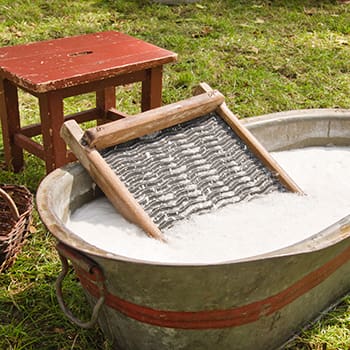There are dozens of potential crisis scenarios that we face these days. One of the scariest is the loss of our power grid. Whether this happens due to hackers, an EMP blast (electromagnetic pulse), or some other factor, a complete lack of power is a scary scenario in our modern times. Estimates have shown that any modern population could look at as much as a 90% mortality rate after just one year without power. The fact of the matter is that most people do not know how to live without power. Whether it is the lack of heat, air conditioning, lighting, or cooking appliances, a lack of power makes a huge difference in survival.
However, there is one group of people living in modern society that has chosen to live without electricity. This is the Amish. Day in and day out for hundreds of years they have preserved food, lit their homes, worked the land, and cooked their meals without any need for electricity. They use manpower, hand tools, wood stoves, and animal power to live a relatively comfortable life. For those that wish to survive a long-term loss of power, the Amish are the best teachers for which we could possibly ask. This article will cover specific lessons we can learn from these amazing people.
#1. Use Of Non-Power Tools
One thing you will notice immediately about the Amish is that they take good care of their tools. I have to admit there have been times I forgot and left my tools out in the rain or did not put them back in their proper place. You will never see this in an Amish community. They treasure their tools from an early age and maintain them to a meticulous level. Their axes, awls, shovels, plows, anvils, and hammers are all kept in pristine condition.
In addition, many of their animals are considered tools in the Amish community. Horses in particular are vital to their farming and transportation efforts. Again, their animals are carefully cared for so that they live long life and perform at an optimum level. Toddlers are taught to saddle and train horses as well as rig them up to plows and wagons. The horses are part of the family in the Amish community and are trained better than just about any other horse you will find.
#2. Homeschooling
If you spend any time within the Amish community, you will quickly learn that their children are everything to them. Homeschooling is always a challenging venture, and doing it well in a community without the Internet is even more challenging. What you will find is that the Amish have successfully kept their children at least one grade level above modern children of comparable age. In addition, they have been able to incorporate both religion and farming techniques into their lessons. These children are able to contribute to the farming needs of their communities while also learning everything they need for the future.
#3. Hand Sewing
One of the realities of living without electricity is that you will need to make and mend your own clothing. I know plenty of skilled seamstresses, but few can accomplish much without a sewing machine. In the Amish community, children are taught to sew as toddlers. Within a few years, they can spool thread, weave cloth, and design and sew clothing. In addition, they can mend any clothing that is damaged during the rigorous activities required in the Amish community. Their clothing is thick and designed for abuse. They use simple fasteners such as buttons and Velcro. This is just one of the 25 skills you can trade after a crisis.
#4. Primitive Farming
Farming is the lifeline of the Amish community. However, they have to do so without all of the heavy farm equipment that everybody else uses to maintain a farm. Normally the Amish sew fields of corn, beans, wheat, hay, barley, potatoes, tomatoes, and grasses for grazing animals. Everything is done with horse-drawn equipment, and a great deal of the crops are sold to outlying communities to fund other projects. Crop rotation is a huge part of Amish farming to ensure that nitrogen is always available in the soil for their crops.
One interesting part of Amish farming and general life is that rarely does one person have the skills to accomplish everything they need to accomplish. Instead, they specialize in one area and closely network with other people within the Amish community. This allows them to work their fields quickly or raise a barn in one day if needed.
#5. Plant Identification
As we recommend for any survivalist, living in a primitive community requires knowledge of plants. It is vital to know the plants that can feed you, heal you, or kill you. The Amish have their farming practices to feed them, but they are also prepared to survive on wild edibles if needed. From the age of a toddler, the Amish can walk into the woods and come out with a meal whenever needed. They can identify the types of trees ideal for fires, building, and for cooking. They know the trees are ideal for an axe handle or for a longbow. This would help them survive even if their crops failed.
In Conclusion
When things go south, you better bet the Amish community will be mildly phased. This group of incredible people has been able to thrive while resisting the urge to give in to modern society. In many ways, they have better prepared themselves for a full life than the rest of us. There is so much we can learn from a society such as this. If each of us can just take a few pages out of the book of the Amish, we all will be better prepared in a crisis.
This article first appeared on Ask A Prepper.
You may also like:
5 Amish Gardening Techniques You Should Know
The Bunker Food You Need To Have Right Now (Video)
Strange Meals People Ate During The Great Depression
12 Native American Remedies That We Lost To History
5 Solar-Powered Items That Actually Make Sense To Keep Handy










